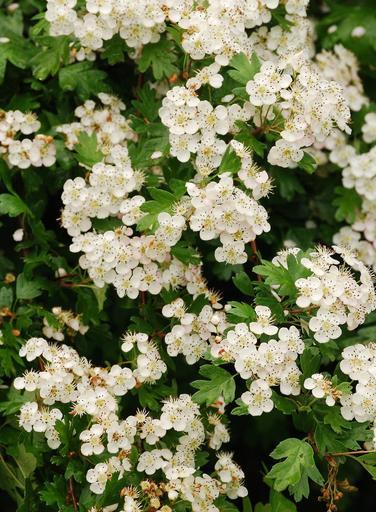A popular landscaping tree or shrub because of ther hardy nature and profuse fragrant flowering in spring, Hawthorn trees fall in the genus Crataegus, comprising hundreds of species in the Rose family. They are deciduous trees with upright spreading or bushy habits; some varieties can be kept as shrubs.
Hawthorn is a versatile deciduous tree that grows 15 to 50 feet tall and 8 to 35 feet wide, depending on variety.
The fruits, which look similar to rose hips, are red, orange, yellow, or black. Classified as pomes (as with apples and pears) the fruits are produced in fall and persist through winter. The edible pomes, which have various culinary and medicinal qualities, are also an important food source for robins, waxwings, and other songbirds.






